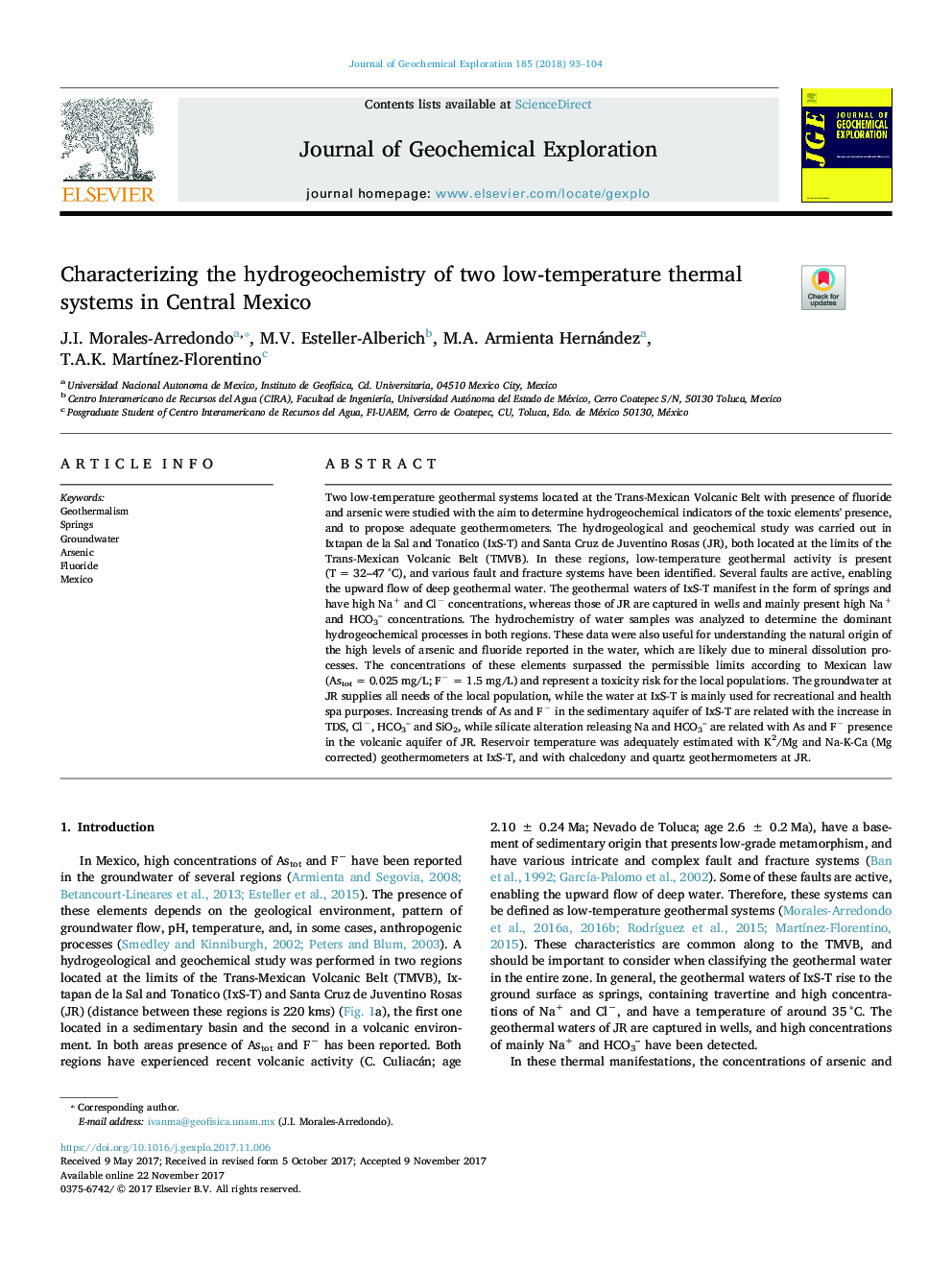| Article ID | Journal | Published Year | Pages | File Type |
|---|---|---|---|---|
| 8866110 | Journal of Geochemical Exploration | 2018 | 12 Pages |
Abstract
Two low-temperature geothermal systems located at the Trans-Mexican Volcanic Belt with presence of fluoride and arsenic were studied with the aim to determine hydrogeochemical indicators of the toxic elements' presence, and to propose adequate geothermometers. The hydrogeological and geochemical study was carried out in Ixtapan de la Sal and Tonatico (IxS-T) and Santa Cruz de Juventino Rosas (JR), both located at the limits of the Trans-Mexican Volcanic Belt (TMVB). In these regions, low-temperature geothermal activity is present (T = 32-47 °C), and various fault and fracture systems have been identified. Several faults are active, enabling the upward flow of deep geothermal water. The geothermal waters of IxS-T manifest in the form of springs and have high Na+ and Clâ concentrations, whereas those of JR are captured in wells and mainly present high Na+ and HCO3- concentrations. The hydrochemistry of water samples was analyzed to determine the dominant hydrogeochemical processes in both regions. These data were also useful for understanding the natural origin of the high levels of arsenic and fluoride reported in the water, which are likely due to mineral dissolution processes. The concentrations of these elements surpassed the permissible limits according to Mexican law (Astot = 0.025 mg/L; Fâ = 1.5 mg/L) and represent a toxicity risk for the local populations. The groundwater at JR supplies all needs of the local population, while the water at IxS-T is mainly used for recreational and health spa purposes. Increasing trends of As and Fâ in the sedimentary aquifer of IxS-T are related with the increase in TDS, Clâ, HCO3- and SiO2, while silicate alteration releasing Na and HCO3- are related with As and Fâ presence in the volcanic aquifer of JR. Reservoir temperature was adequately estimated with K2/Mg and Na-K-Ca (Mg corrected) geothermometers at IxS-T, and with chalcedony and quartz geothermometers at JR.
Related Topics
Physical Sciences and Engineering
Earth and Planetary Sciences
Economic Geology
Authors
J.I. Morales-Arredondo, M.V. Esteller-Alberich, M.A. Armienta Hernández, T.A.K. MartÃnez-Florentino,
